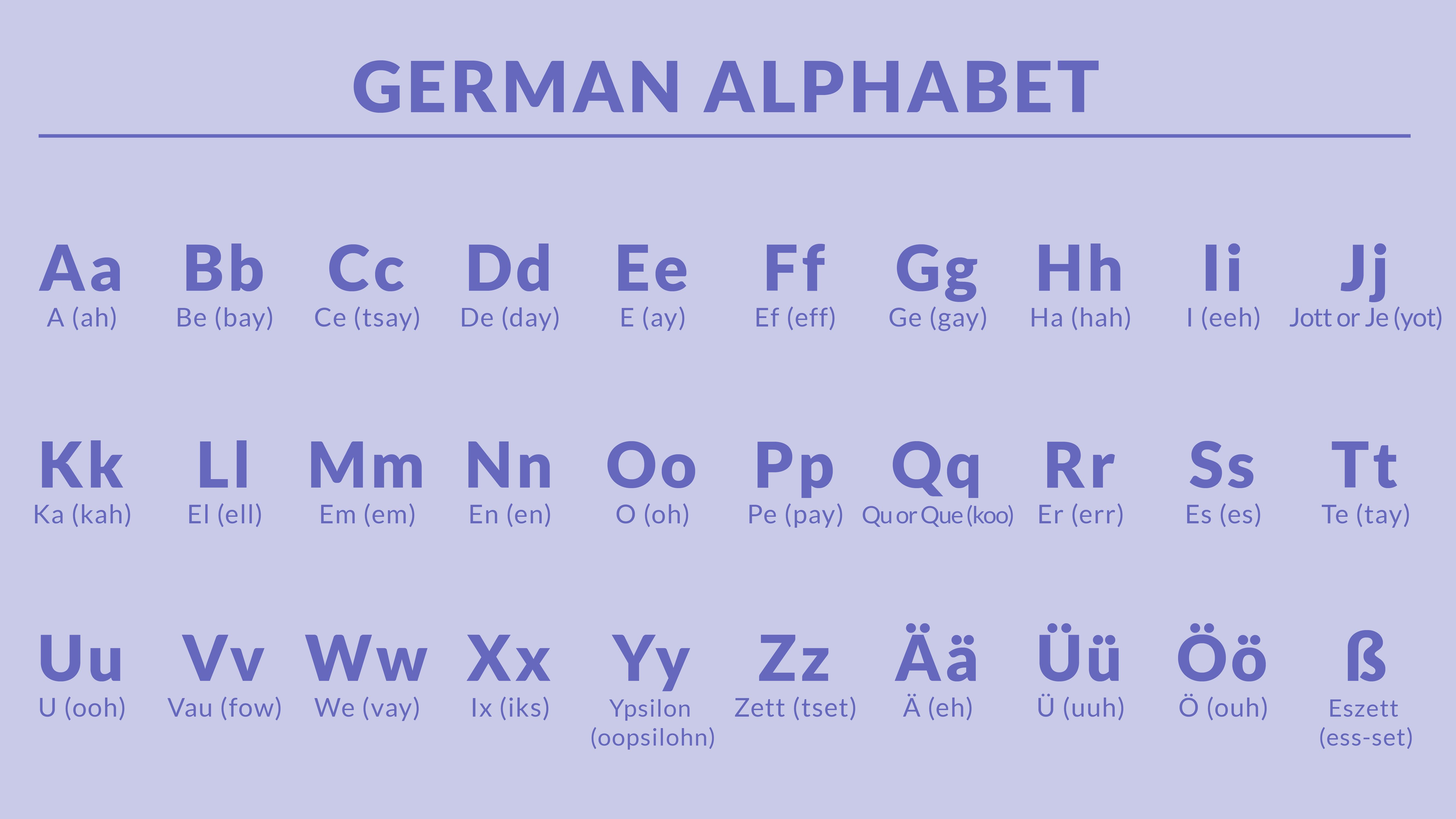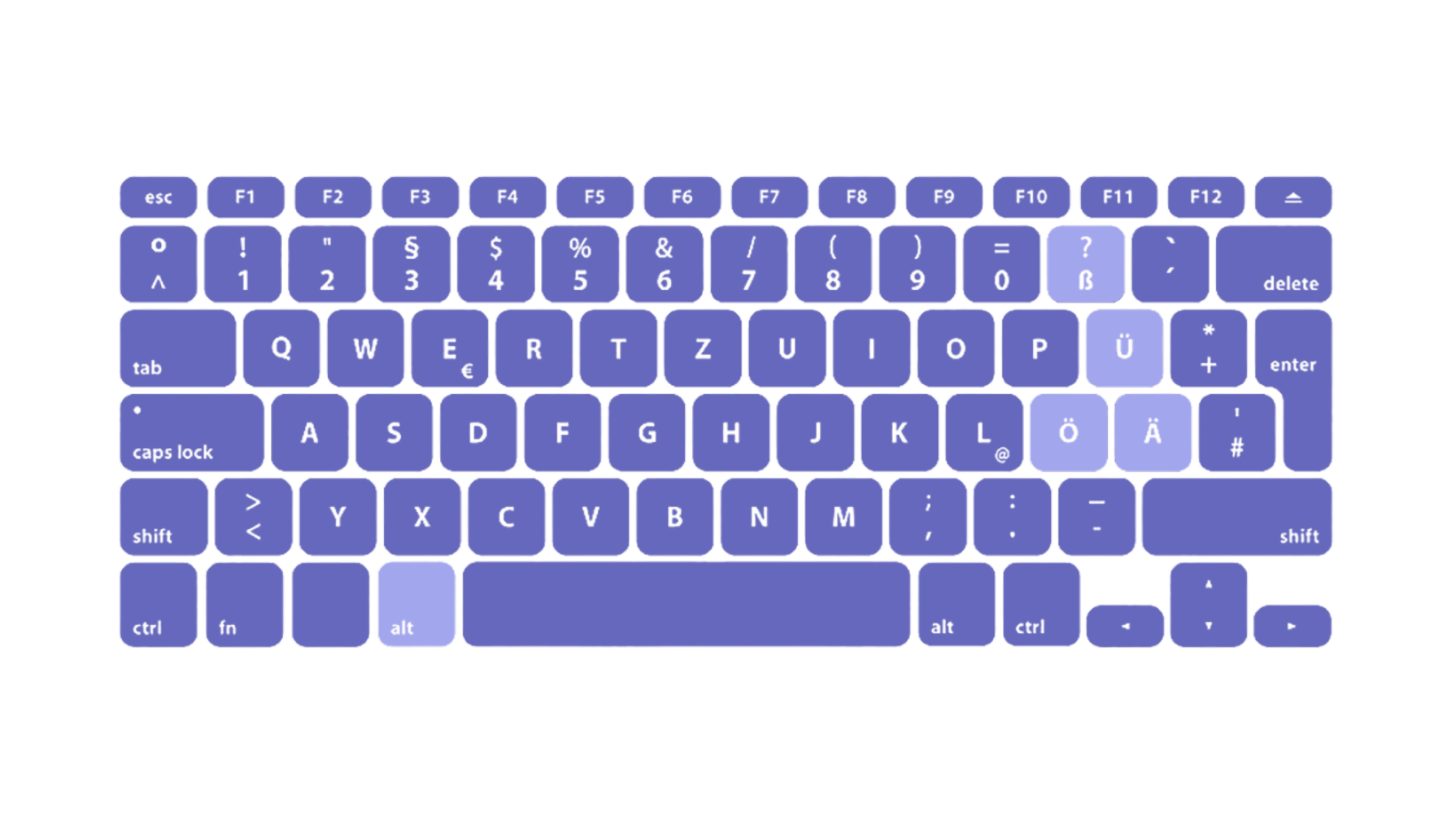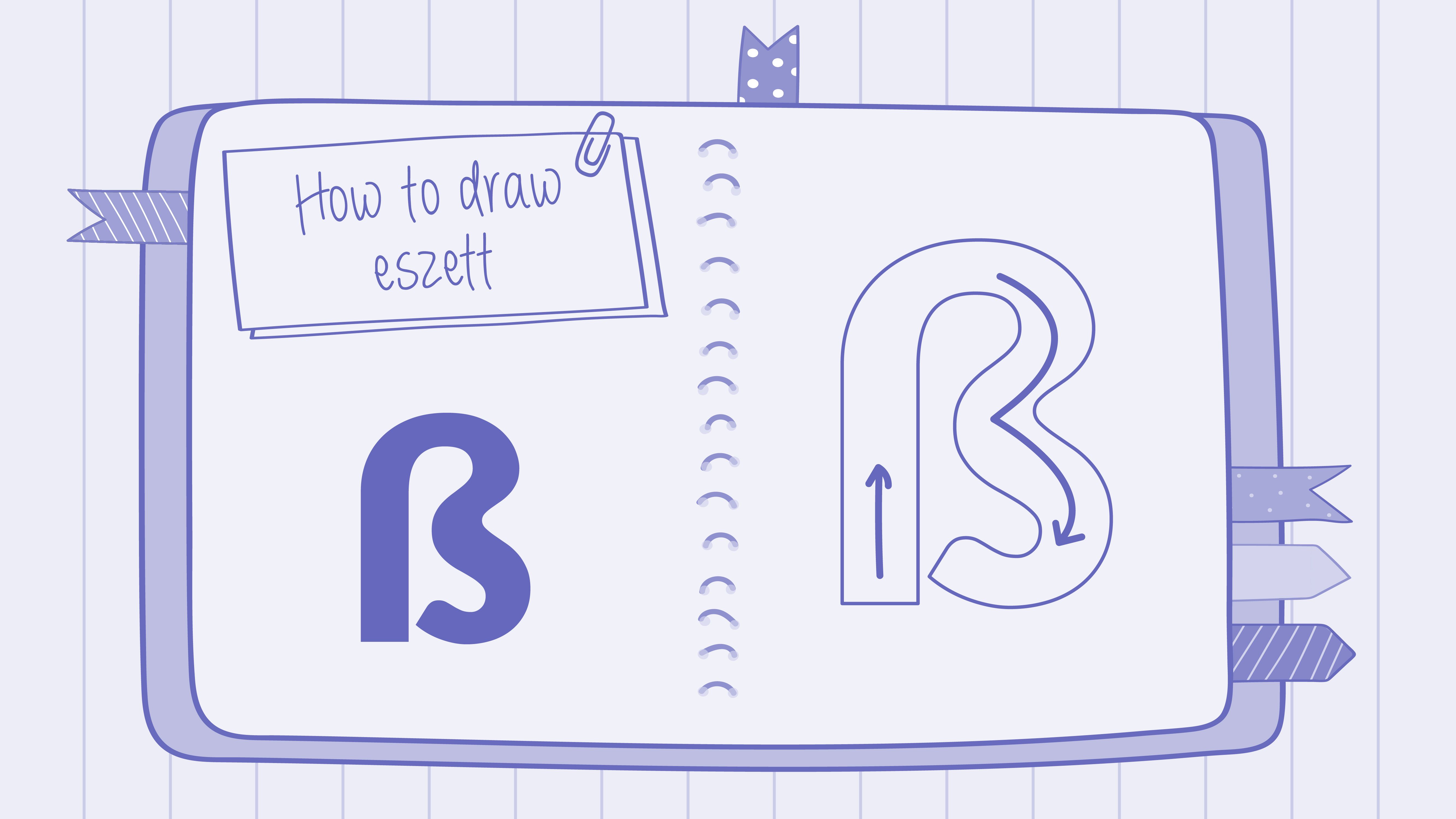
Mastering a new language is an admirable feat, and every journey begins with a single step. For those learning the German language, that step involves understanding and navigating the German alphabet — das Deutsche Alphabet.
The beauty of the German language lies in the unique letters and sounds that lend it a distinct rhythm and melody.
In this article, we'll guide you through the labyrinth of the German alphabet, from Ä to Z. We aim to simplify your learning process by breaking down the alphabet into digestible chunks and answering the most common questions.
Whether you're a beginner or an intermediate learner wanting to brush up on your basics, this comprehensive guide will be your reliable companion.
Learn German with Langster
How Many Letters Are in the German Alphabet?
The German alphabet consists of 26 standard letters, just like the English alphabet.
However, it also includes four additional characters — ä, ö, ü, and ß — unique to the German language. When you factor in these extra letters, the German alphabet expands to a total of 30 letters.
The good news for English speakers venturing into learning German is that they already have a solid foundation. The 26 letters that mirror those in English provide a head start.
The challenge then becomes familiarizing oneself with the four additional vowels and mastering the pronunciation of letters that, though they look identical to their English counterparts, sound different.
One comforting aspect of the German language is its orderliness, reflecting German society's penchant for structure. Unlike English, the German language adheres to consistent German spelling rules. This means that in most cases, you can correctly pronounce a word if you know how each letter of the alphabet sounds.
This predictability makes navigating the German words a more manageable task than it initially seems.
The Letters of Das Deutsche Alphabet
So, here's a comprehensive table of the German alphabet, including each letter's German pronunciation and an example of its use in a word:
| Letter | Name (Pronunciation) | Example | Translation |
|---|---|---|---|
| A | A (ah) | Apfel | Apple |
| B | Be (bay) | Buch | Book |
| C | Ce (tsay) | Computer | Computer |
| D | De (day) | Deutsch | German |
| E | E (ay) | Elefant | Elephant |
| F | Ef (eff) | Fisch | Fish |
| G | Ge (gay) | Garten | Garden |
| H | Ha (hah) | Haus | House |
| I | I (eeh) | Insel | Island |
| J | Jott or Je (yot) | Jahr | Year |
| K | Ka (kah) | König | King |
| L | El (ell) | Liebe | Love |
| M | Em (em) | Mutter | Mother |
| N | En (en) | Nacht | Night |
| O | O (oh) | Ozean | Ocean |
| P | Pe (pay) | Papier | Paper |
| Q | Qu or Que (koo) | Quelle | Source |
| R | Er (err) | Rot | Red |
| S | Es (es) | Sonne | Sun |
| T | Te (tay) | Tag | Day |
| U | U (ooh) | Uhr | Clock |
| V | Vau (fow) | Vogel | Bird |
| W | We (vay) | Wasser | Water |
| X | Ix (iks) | Xylophon | Xylophone |
| Y | Ypsilon (oopsilohn) | Yacht | Yacht |
| Z | Zett (tset) | Zug | Train |
| Ä | Ä (eh) | Nächste | Next |
| Ö | Ü (uuh) | Öl | Oil |
| Ü | Ö (ouh) | Über | Over |
| ß | Eszett (ess-set) | Straße | Street |
| Letter | Name (Pronunciation) | Example | Translation |
|---|---|---|---|
| A | A (ah) | Apfel | Apple |
| B | Be (bay) | Buch | Book |
| C | Ce (tsay) | Computer | Computer |
| D | De (day) | Deutsch | German |
| E | E (ay) | Elefant | Elephant |
| F | Ef (eff) | Fisch | Fish |
| G | Ge (gay) | Garten | Garden |
| H | Ha (hah) | Haus | House |
| I | I (eeh) | Insel | Island |
| J | Jott or Je (yot) | Jahr | Year |
| K | Ka (kah) | König | King |
| L | El (ell) | Liebe | Love |
| M | Em (em) | Mutter | Mother |
| N | En (en) | Nacht | Night |
| O | O (oh) | Ozean | Ocean |
| P | Pe (pay) | Papier | Paper |
| Q | Qu or Que (koo) | Quelle | Source |
| R | Er (err) | Rot | Red |
| S | Es (es) | Sonne | Sun |
| T | Te (tay) | Tag | Day |
| U | U (ooh) | Uhr | Clock |
| V | Vau (fow) | Vogel | Bird |
| W | We (vay) | Wasser | Water |
| X | Ix (iks) | Xylophon | Xylophone |
| Y | Ypsilon (oopsilohn) | Yacht | Yacht |
| Z | Zett (tset) | Zug | Train |
| Ä | Ä (eh) | Nächste | Next |
| Ö | Ü (uuh) | Öl | Oil |
| Ü | Ö (ouh) | Über | Over |
| ß | Eszett (ess-set) | Straße | Street |
Note: When referencing a letter in the German language, you should use the article das before it.
Although there are three versions of articles in German — der for masculine, die for feminine, and das for neuter — we consistently use das when it comes to letters. Thus, you would say das A, das B, das C, referring to the letters of the German alphabet.
What Are the Four Extra German Letters?

Diving deeper into the intricacies of the German alphabet, we encounter four unique letters that set it apart from the English alphabet. These additional characters are not just mere adornments but essential components that add richness to the German language.
In this section, we will explore these four extra letters: ä, ö, ü, and ß, and understand their importance and usage among German speakers.
Vowels with Umlauts: Ä, Ö, Ü
Umlauts are two little dots placed over certain vowels that signify a change in pronunciation. Although these sounds might seem unfamiliar to English speakers, with a bit of practice, they can be easily mastered.
In standard German and German dialects, three letters can have umlauts:
- A/a — Ä/ä,
- O/o — Ö/ö,
- U/u — Ü/ü.
These letters with umlauts are considered separate letters from their base vowels.
Among these, Ä is the easiest to pronounce as it has a close English equivalent. It resembles the short "eh" sound found in the English word "head."
Although the pronunciation can be extended in certain words, take care not to turn this German letter into an "ay" sound.
The pronunciations for Ö and Ü are more complex, as there are no direct English equivalents.
For pronouncing Ö, begin by forming the word "look" with your mouth, then shift your lips into an "O" formation.
To pronounce Ü, start with an expression of distaste, similar to "eww," then pucker your lips as if preparing to whistle. Don't worry about looking silly; exaggeration can help with accuracy!

When it comes to typing letter combinations with these special letters, there's a simple solution for those without access to a German keyboard — any umlaut vowel can be substituted by typing an E immediately after the vowel.
For instance, schön (beautiful) can be written as schoen. German speakers will understand perfectly what you mean.
The Eszett: ß

The Eszett, or "sharp S," is another unique character in the German ABC. The pronunciation of ß, which stands out due to its absence from the Latin/Roman alphabet, is straightforward; it's identical to the English “s” sound.
It appears after long vowels and diphthongs. For example, in the word Straße (street), the “a” is a long vowel, so it's followed by ß.
The eszett is not used in any other language and is an example of a ligature — a term referring to the fusion of two sounds or letters to form a new one.
When typing without a German keyboard, it's perfectly acceptable to replace ß with “ss.” For instance, Straße can be written as Strasse.
If you're feeling adventurous, practicing to write ß by hand can also be an interesting challenge!
The Bottom Line

Navigating the German orthography, from Ä to Z, can seem daunting initially, but with practice and perseverance, it becomes second nature when writing and speaking German.
Remember: learning a new language opens up a world of opportunities, broadens your cultural understanding, and enhances your cognitive abilities.
To keep practicing and improving your German language skills, consider downloading our Langster app — it's the perfect tool to accompany your language learning journey. Happy learning!
Learn German with Langster









